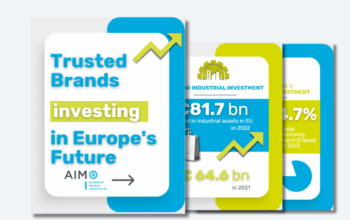As Europe intensifies its focus on competitiveness in 2024, the branded consumer goods industry—a significant contributor to the EU’s manufacturing landscape—remains steadfast but cautious. According to the latest AIM European Consumer Goods Industry Barometer, supply chain disruptions, inflationary pressures, and labour shortages continue to shape the industry’s operations and strategic outlook.
The consumer goods sector, Europe’s third-largest manufacturing industry, navigates a complex landscape where sourcing challenges, geopolitical tensions, and fluctuating costs have become the new normal. Despite these ongoing hurdles, the sector’s commitment to supporting the EU’s Single Market remains strong. With an annual movement of €276 billion in consumer goods within the EU, representing 61% of all fast-moving consumer goods (FMCG) traded, the industry plays a pivotal role in the region’s economy.
Key Findings:
- Supply chain disruptions: 88% of EU FMCG manufacturers reported experiencing sourcing, supply, or production challenges in the past year. These disruptions have led to significant operational adjustments, with 58% facing sourcing challenges for essential components and 35% reducing or cutting production to manage constraints.
- Labour shortages: Labour shortages affected 2 out of 5 consumer goods manufacturers, impacting up to 20% of their product range for nearly one-fifth of businesses. This trend underscores the importance of agility and flexibility in the industry to maintain productivity.
- Rising costs: Inflation continues to impact the sector, with 94% of consumer goods manufacturers experiencing cost increases over the last year. Notably, labour, transport, and raw materials saw the most significant inflationary impact, affecting production costs and, consequently, the retail sector.
- Impact on investments and employment: Due to economic pressures, 36% of manufacturers surveyed have had to cut R&D investments and 38% have reduced capital expenditure (CAPEX). Additionally, 12% have had to make the difficult decision to reduce their workforce to remain competitive in the current economic climate.



